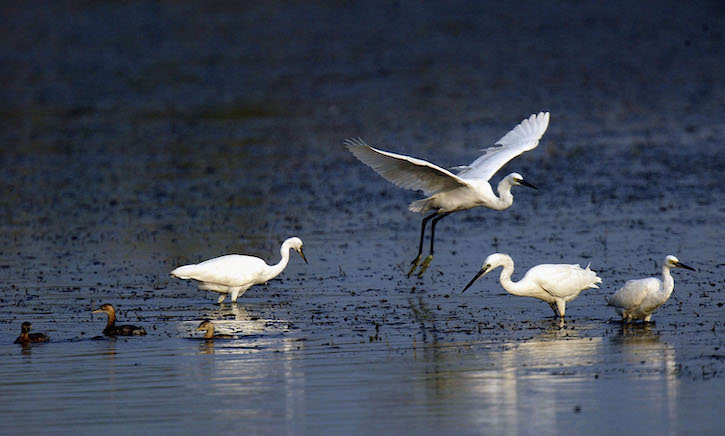
About 60 percent of China’s coastal wetlands—crucial ecosystems that help protect coastal communities from rising sea levels and extreme weather and provide a stopover for millions of migratory birds—have disappeared since the 1950s as a result of reclamation for industry, agriculture, urbanization, over-aquaculture, and invasive species. According to the Coastal Wetlands Blueprint, jointly produced by the Convention on Wetlands Management Office of P. R. China, the Paulson Institute, and the Chinese Academy of Science’s Institute of Geographical Science and Natural Resources Research, the coastal wetlands are the most threatened and least protected of all ecosystems in China. It’s bird season—the migratory birds have gathered on China’s wetlands to fatten up for their journey to southern winter homes. Read the blueprint’s key recommendations for policies needed to save their critically endangered habitats:
- Strengthen and revise wetland legislation at both the national and local level. Develop and issue national regulations on wetlands conservation, and incorporate wetland conservation into the provisions of relevant laws, providing a legal basis for enhancing wetland protection and management. Include natural coastal wetlands in local natural resources’ balance sheets and add wetlands protection to local officials’ performance appraisal system. The government must also establish and streamline systems focusing on law enforcement, wetland management, and coordination between government agencies and local governments.
- Incorporate coastal wetland conservation efforts into the overall planning of land spatial development and protection. Implement pilot projects that focus on integrated planning and ecological land use at the coastal municipal and county levels. At the same time, previously approved coastal wetland conversion and sea reclamation projects need to be reassessed and/or suspended. Conduct ecological restoration of coastal wetlands that have been reclaimed, but not developed.
- Enhance coastal wetland protection and restoration projects. Efforts should be made to support conservation-based infrastructural development projects such as nature reserves and national parks. Introduce an independent third-party appraisal mechanism to assess completed conservation projects and highlight best practices, with specific focus on the wise use of coastal wetlands.
- Expand or build new coastal wetland protected areas. Implement a management system that ranks coastal wetland areas at various levels of importance. Establish nature reserves and parks in 11 critical bird habitats that are not yet protected and develop a programmatic plan for coastal wetland conservation to provide necessary technical guidance and financial support.
- Enhance scientific research on coastal wetlands to develop technical models for protection, restoration, and management. Establish a monitoring and research network on coastal wetlands and include key wetland areas in the scope of the National Eco-Environmental Monitoring Network Program. Authorities must also launch a science and technology action plan, as well as organize partnerships between NGOs and other relevant organizations to tackle coastal wetland issues related to ecosystem restoration and management.
PLUS: The blueprint’s final recommendation focuses on public awareness, a crucial part of saving the wetlands and the birds they sustain. The Paulson Institute has been running an awareness campaign over the past month, with a series of videos about the wetlands and endangered migratory birds.
- Promote the Coastal Wetland Conservation Network and raise public awareness on the importance of conservation. China should join the Convention on the Conservation of Migratory Species of Wild Animals (CMS) and facilitate international cooperation on wetland conservation. It is also necessary to leverage local and national organizations to organize activities raising public awareness on the importance of coastal wetlands conservation, such as by promoting nationwide eco-tourism activities in coastal wetlands and circulating conservation knowledge online.




